Last updated on September 4th, 2022.
Challah, a traditional Jewish bread, is baked every weekend and braided in a fancy way to welcome the beloved Shabbat (Saturday). It is soft, sweet, fluffy, and crumbly. It’s great for French Toast, sandwiches, or just as is. This time I am giving you my favorite Bakery Style Challah Recipe.
There are two more Challah recipes you should check out: Sweet Fluffy Challah and my quick and Easy Challah Recipe.
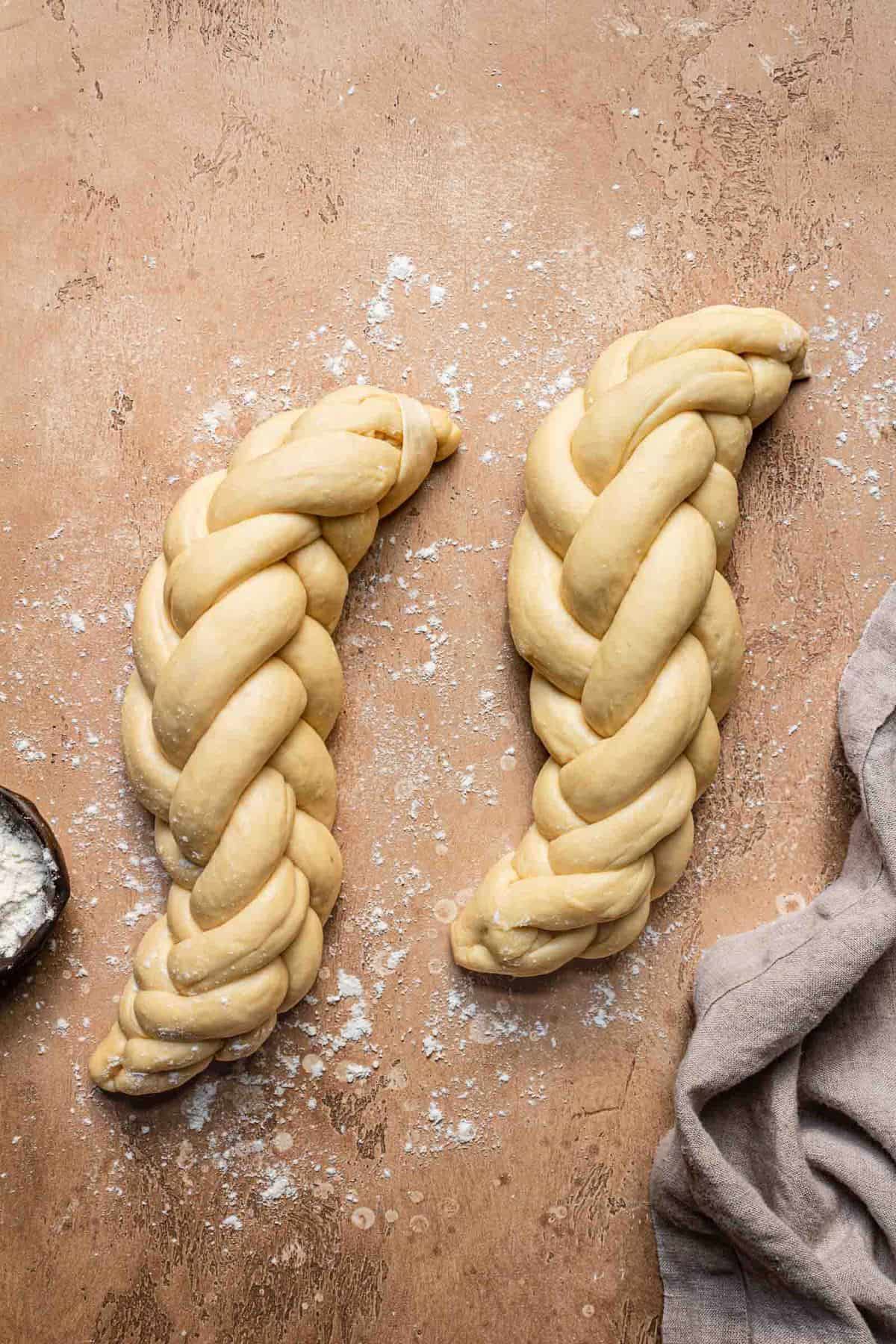
It took me a while to figure out how to achieve consistent results for this Bakery Style Challah recipe. After many failed attempts, research, and having the pleasure of talking to the one and only bread master, Jeffrey Hamelman from King Arthur Flour, I finally achieved the perfect Challah. All of this leads me to offer you the following bullet points.
It might be a bit long, but definitely worth your time. Please take the time to read all the points before you start baking.
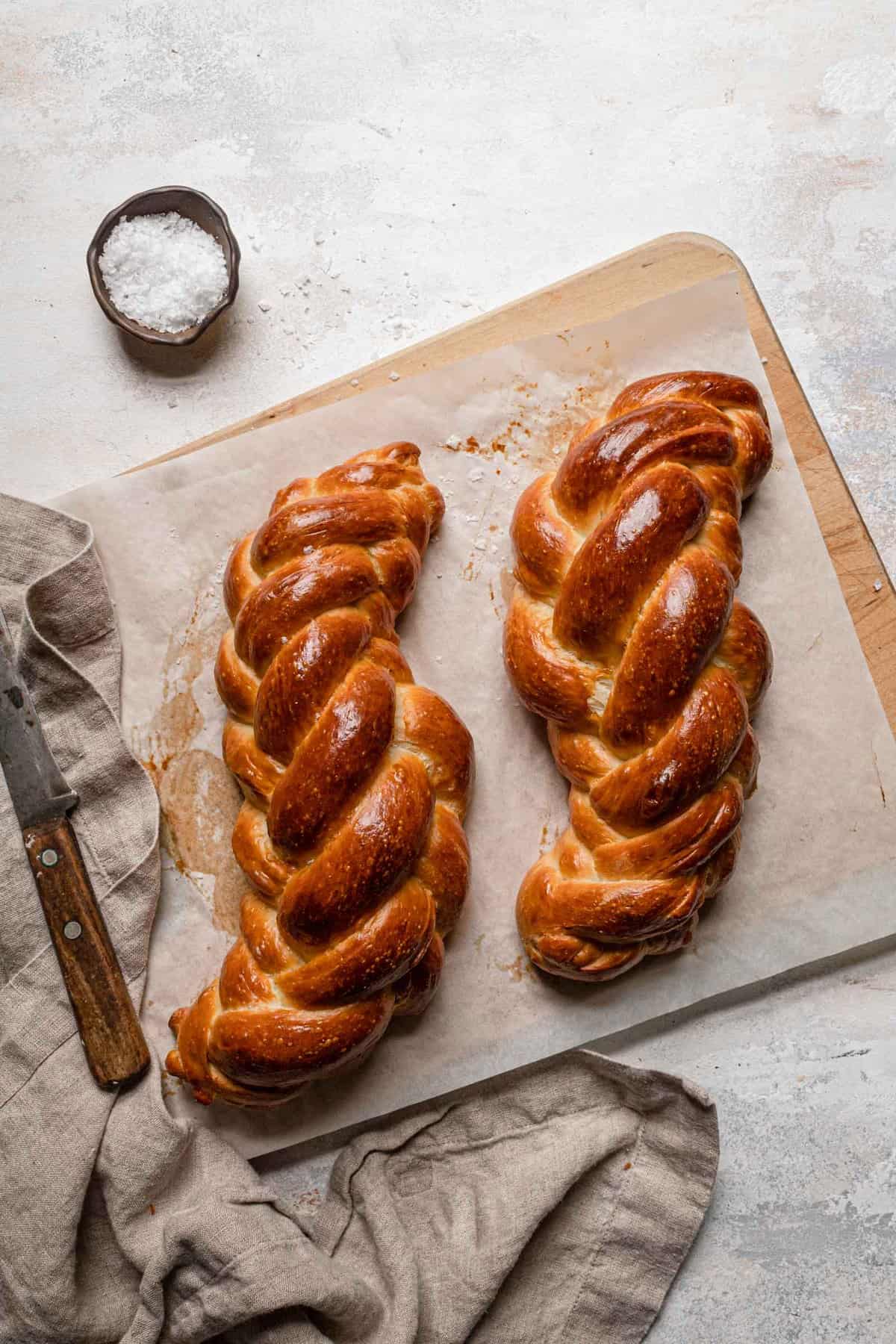
Dough Hydration
The recipe calls for 1 1/2 cups of water. I only use 1 cup because I learned that the less water I use, the fluffier and lighter the Callahan turns out.
Depending on the climate of your hometown and/or time of year, you might still need to use the full amount of water. Feel free to experiment and adjust accordingly.
How can you tell?
Start by adding 1 cup of water into the egg yolks mixture, then add it all to the dry ingredients and give it about 1 minute to hydrate. It might look like it is super dry and needs more water, but PLEASE be patient as it might take a minute.
If the dough forms but some dry ingredients cannot be absorbed, add 1/4-1/2 teaspoon at a time.
The dough should try to “climb up” the hook, but if it is over-hydrated the majority of it will be stuck to the sides of the bowl. (If that happens, do NOT add more flour. Keep following the recipe as is. The Challah will still come out delicious!)
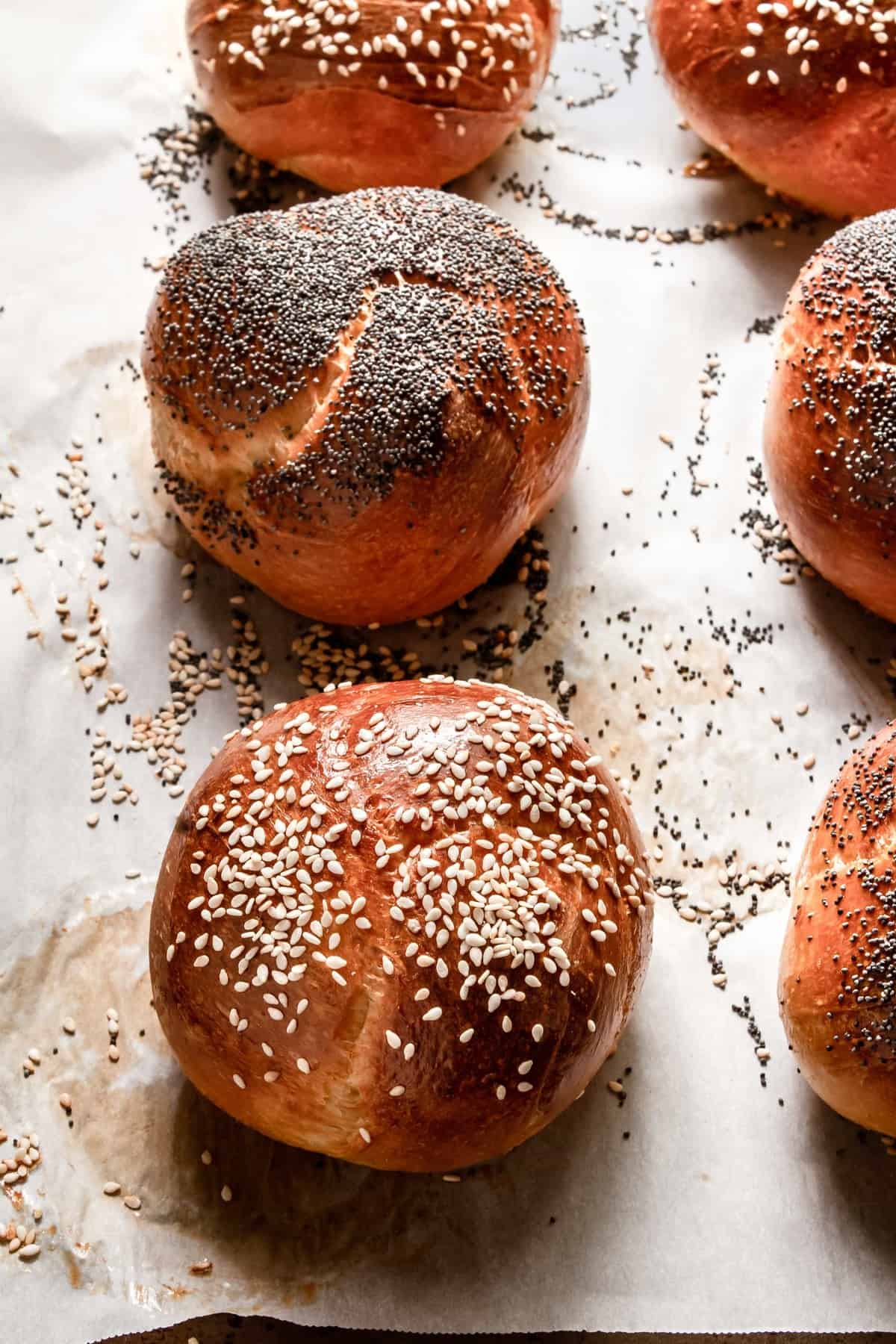
Mixing the Dough
Most times it takes no more than 5 minutes to mix the dough. The way I check is by pinching a small piece of dough and gently stretching it with my fingers from the middle out. You want the dough to be able to stretch a little and then tear. If it tears right away, mix it some more.
Why stretch and tear?
When baking bread you want the end result to be the best result: soft, light, and easy to bite, with some crumbs. What you don’t want is a chewy texture that is hard to bite or a flat and dense bread that resembles more of a cake.
Making sure that the dough had formed the right amount of gluten, (hence the stretching) but was not over-mixed, (hence the tearing) is the best way to achieve the best bread.
Rise Time
There are no corners to cut with this one. Plan ahead and give the dough the time to work its magic.
The yolk and oil make the dough pretty heavy; time is key. There is plenty of sugar in the recipe for the yeast to puff air into the dough, the only ingredient for this one is time.
I make the dough the night before, and allow it to rest overnight. I braid it in the morning and bake it in the afternoon.
Don’t get discouraged, It may seem like a lot, but overall resting time aside, it is a total of 1 hour of work.
Post Bake Cooling
As you take any baked goods out of the oven, it continues to bake since its temperature is still high. The same with this Challah. Since the baking sheet gets cooler faster, the Challah might “sweat” at the bottom and lose its crunchy texture.
Remove the Challah from the pan no more than 4-5 minutes (or immediately) after taking it out of the oven.
Storing this Bakery Style Challah Challah
The Challah is best if eaten within the first two days.
It also freezes quite well. You can bake the full amount as specified below, eat some, and freeze the rest. To store for use after baking, place the Challah in a plastic bag, and store it in a cool/room temperature. For freezing, wrap the Challah with aluminum foil and place it inside of a plastic bag. When ready to eat, take it out of the freezer, remove the foil and allow it to thaw.
If you have more questions, please leave me a comment at the bottom of the post.
HAPPY BAKING!!!
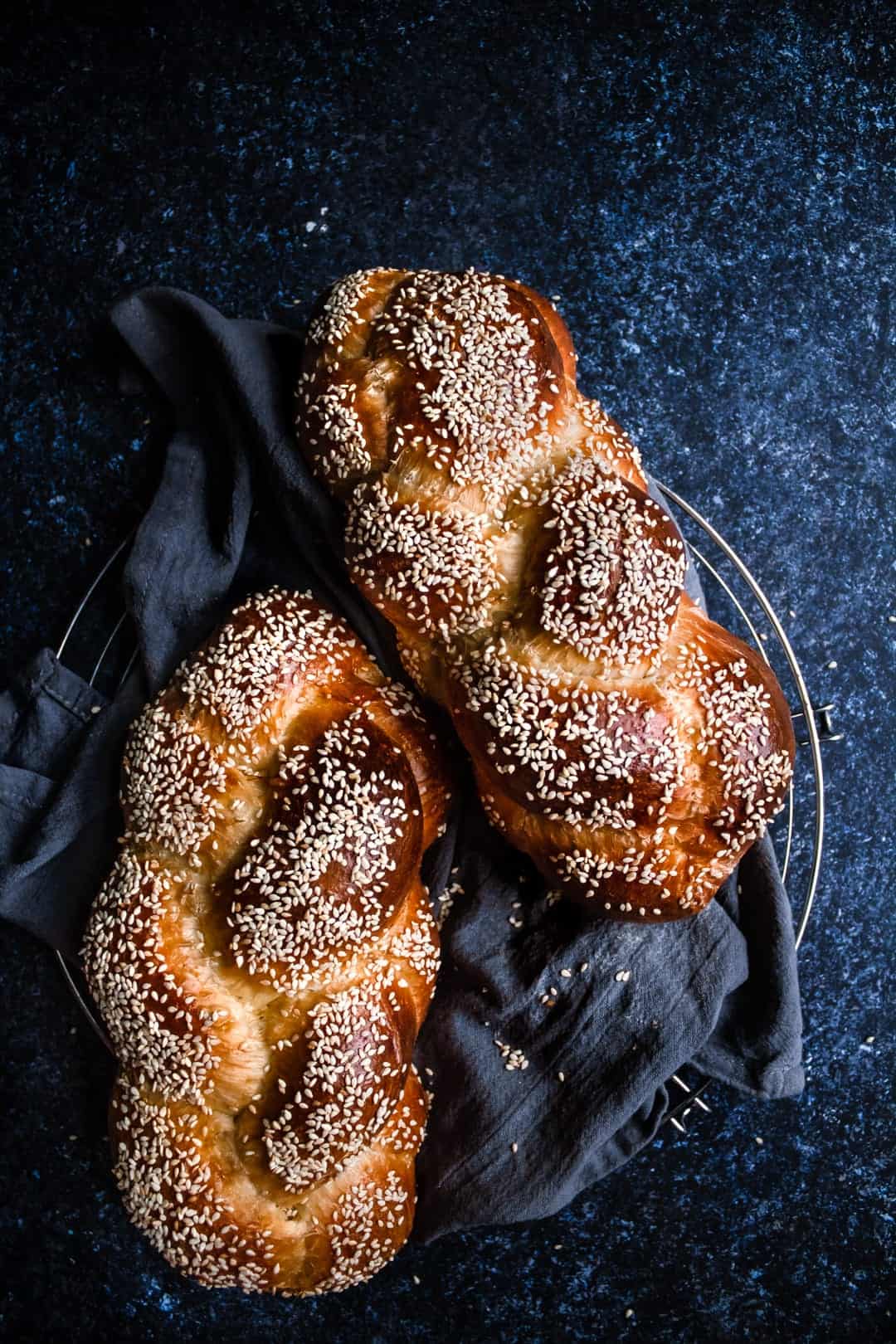
Here are some other Jewish Cuisine posts you might enjoy:
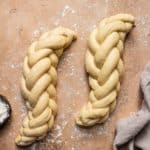
Bakery Style Challah
Sweet light and fluffy traditional Challah Bread.
Ingredients
- 6 1/2 Cups Bread flour (795 g/ 28 oz)
- 1/3 Cups + 1 TBS Sugar (85 g/ 3 oz)
- 2 1/4 tsp Salt (14 g/ 0.5 oz)
- 2 1/2 tsp Active day yeast (10 g/ 0.3 oz)
- 7 1/2 Large Egg Yolks (130 g/4.5 oz)
- 1/4 Cup Vegetable Oil (45 g/ 1.5 oz)
- 1 – 1.5 Cups Warm (90F) Water (start with 1 cup, see notes) (340 g/ 12 oz)
- 2 Large Egg whites
- 2 TBS Poppy or Sesame Seeds (14 g/ 0.5 oz)
Instructions
-
Place the flour, sugar, salt and yeast in a bowl of a standing mixer and use the flat paddle on the lowest speed to incorporate all.
-
In a separate bowl, whisk the egg yolks and vegetable oil until blended. Add the warm water while whisking.
-
Add the yolk mixture into the dry ingredients and keep mixing until the it is mostly hydrated and looks like a messy dough.
-
Switch the paddle attachment to the dough hook and knead at low speed for 5-7 minutes.
-
Place the dough in a large ball (OK to leave in the mixer bowl), apply a thin layer of oil on the dough and cover with plastic wrap. Allow the dough to rest and rise for 8-10 hours.
-
Turn the dough onto a lightly floured work surface and divide it into 2 pieces (about 680 g/ 24 oz each). Let the dough rest for 20-30 minutes to allow the gluten to relax.
-
Divide each piece into as many pieces as you wish to braid and roll each piece into a long sausage than braid into challah.
-
Place the braided dough into a loaf pan or a cookie sheets that were lined with parchment paper and let rise for 4-5 hours.
-
Brush the dough with the egg whites and sprinkle with your choice of seeds.
-
Bake for 25-30 minutes at 350F. (turn the pans mid bake time)
-
Remove from the oven and place on a cooling rack,.
Recipe Notes
You can braid and bake the Challah on a cookie sheet or braid and bake in a 2 8″x3″ loaf pans.
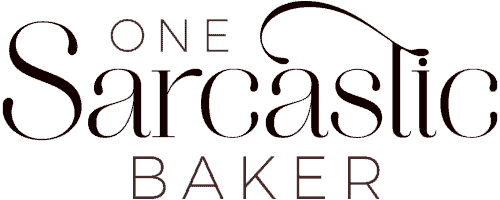
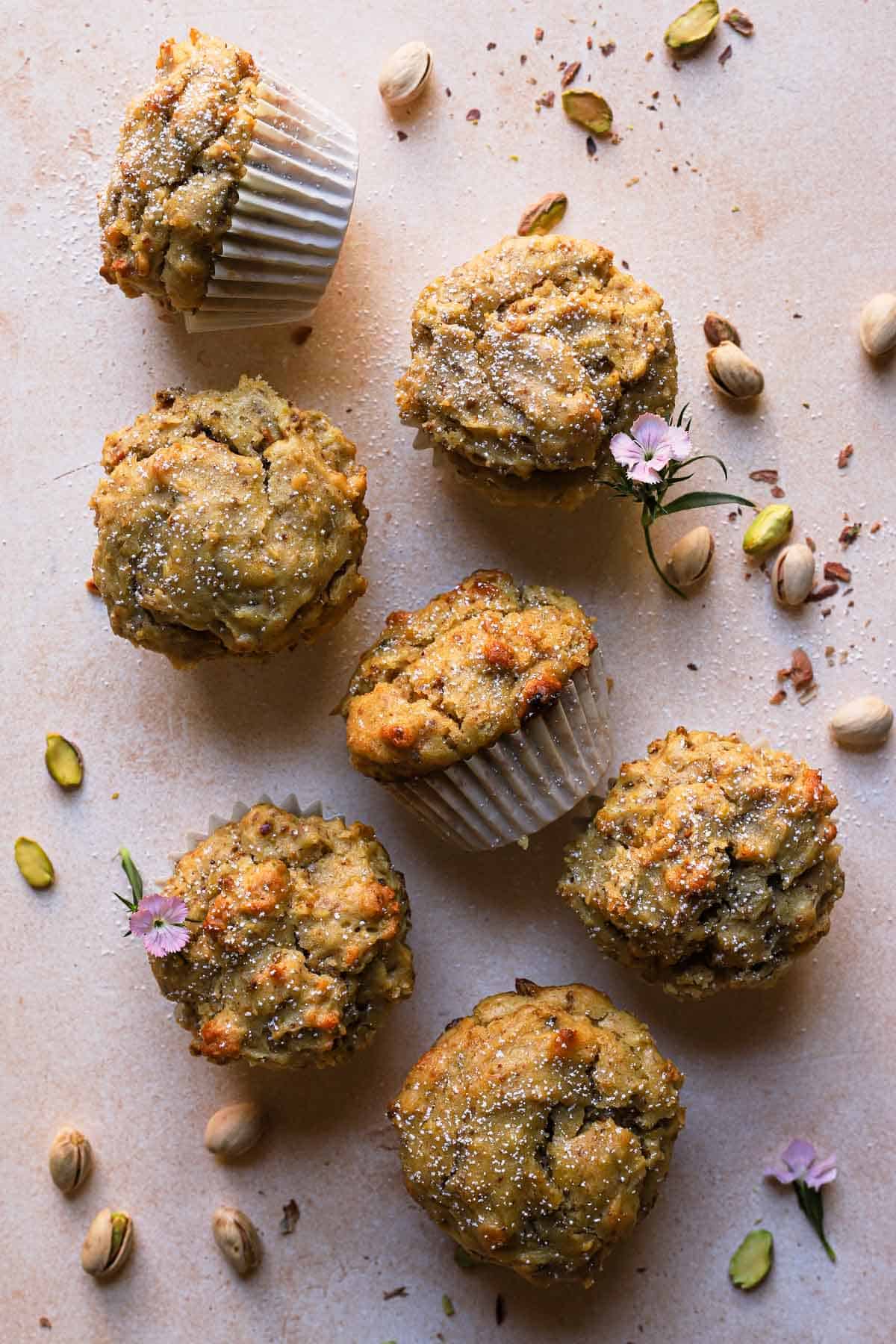



Which standing mixer do you recommend?
I like the Kitchen Aid brand, 4.5 qt. Any brand that has the dough hook would work.
Great recipe Dee! I like that the instructions are so specific. My boyfriends mom makes challah bread and I love it. This recipe sound amazing!
Thanks Danielle! Challah is a great bread, I’m sure your boyfriend’s mom makes a great Challah.
Step #5 – do you allow it to rise/rest at room temperature or refrigerated?
Room temperature.
Hello,
The bread looks lovely. Can you please tell me what temperature do you bake it at?
Absolutely! 350F.
How long are your rolls before you braid them?
Between 12″-16″. It really depends how many strands you are braiding per Challah, more strands per challah means longer rolls.
Hi! Looks delicious. I was wondering if you could explain what you mean by 7 1/2 egg yolks?
Thanks! Excited to try your recipe.
Hi Mazal!
Well, 7 1/2 egg yolks is equal to 130 g (mostly refers when using a baking scale). BUT don’t worry about that extra 1/2 yolk feel free to go with 8 yolks.
I made your challah recipe twice and both times it came out very dense. I only added 1 cup water. It was hard to roll the dough. Should I have added more water to make the dough softer?
It sounds like the dough came together so you had plenty of water. My guess is that you either over mixed it or did not give it enough time to rise. Even it is hard to roll the second rise should supply enough air for it to be fluffy after baking.
Thank you for your reply. The altitude where I live is 2300 feet above sea level. Could that have an effect on the batter? The first time I made the challah I mixed it for 5 minutes in my kitchen aid, and the second time I made it I mixed it for 4 & 1/2 minutes. I let the batter rise for close to 10 hours and the second rise was over 4 hours.
Hi again, I think the issue was the mixing time. This is a huge amount of dough and for the gluten to develop properly you need to give it more time. The way to know is by pinching a small piece and slowly stretch it. If it does not tear easily it is ready. You can go a head and add about 1/4 cup water extra. I’m afraid im not familiar with high altitude baking but 2300 should not make a huge difference.
Excited to try this recipe! I’m wanting to half it though—would this affect the proving time at all?
Hi Katie!
Proofing time can remain the same. If you are tight on time you can cut it short by about 1/4-1/3 of the time.But at the end of the day the long proofing time really gives a lot of flavor.
let me know how it turns out! Happy Baking!
It turned out great! Thank you so much for the advice!
Any time! Glad you enjoyed it!!
Excited to try this recipe but one question. You indicate using instant yeast for this recipe. Can I use active yeast instead?
I Nancy, yes, you can definitely use active dry yeast.
I have always made with all purpose flour. Is that okay or does the bread flour make a big difference? Thanks 🙂
Not at all, AP flour would be just fine.
The recipe looks great and I’m anxious to try it. The recipe doesn’t say anything about punching down the dough after rising. Where should that be done? Before braiding?
Correct. After the first rise, you punch the dough down, divide it, and braid it.
I just found your website and recipe and will try it this week. I am having a horrible time with my dough- very sticky and not gathering into the ball that it should. My dough proofs but remains sticky and difficult to make the ropes because of this. Do you have any advice. I am ready to throw in the towel!
Hi Sara!
There could be a few reasons for the dough to be sticky, first, you do not add any salt. The salt is important for gluten development. Second, you might add too much water. The amount of water needed for each recipe might be different depending on your climate, humidity in your kitchen, or even the time of the year. What I do, is I start by adding 2/3-3/4 of the water the recipe calls for, you need to give it a minute or so for the flour to incorporate. If there is still some flour that does not incorporate add 1 tsp at a time.
Remember that you want the dough to “climb” up the dough hook and not stick to the sides of the bowl. It might feel too stiff but it’s ok, it will soften as it rises.
Hope this helps.
I like adding honey to my challahs. Would 1/4 cup of honey change the texture? Would I need to make any changes to the recipe?
Mmmm… not so sure how it will affect the recipe. I would use the honey and skip the sugar altogether.
These are beautiful loves! What kind of braid did you do?
made them last week and they turned out delicious!
I braid mostly 6 strands. Thank you so much for making these. So happy you enjoyed it.
Thank you for this recipe. I have tried so many and always felt something was missing. I am very intrigued by the 8 yolks. I am going to make your challah this year….I am sure it will be fabulous!
thank you so much! the yolks are why the challah is so soft and delicious!
Thanks for getting back to me! I am going to start my challah baking very soon. Take care?
Me again…..seriously BEST challah ever!!!!! I have been at this for 20 years and your recipe isca game changer. Brilliant and genius??
So glad you liked it Tamar! thank you so much for your feedback!
Your weight on water was totally misleading. 2 cup was on about 125g. So I used that and noticed not nearly enough hydration. Added more but dough very dense and hard to knead. Did not rise well. Will see if it will turn out. Maybe 340g would have been enough. But is 340 the supposed 1 cup weight or the 1 1/2 weight. This vital gram weight of water direction ambiguous.
As long as flour has fully incorporated, it’s ok for the dough to be dense. In fact, it is better, it will soften as it rises. Less water means fluffier challah also, the dough will not be very sticky when brided and will keep its shape during the second rise.
sorry one cup 125 g
I have bread machine yeast and i read to skip the first rise and let rest for 10 min. punch down then make into loaves and let rise . Have you ever used the bread machine yeast in this?
Hi Kerry,
I never used a bread machine so I can not say.
I made your sweet challah recipe, which we love, and will now be my go to recipe. Dough did it’s job easily, not sticky, ropes and braids great. I am wondering why this recipe is called a “bakery” recipe. Also- would it be possible to adjust the sweet challah recipe to make one loaf, and any ideas on how to do that?
Thank you so much Sara, so glad to hear you loved the recipe. You can cut the ingredients in half and follow the recipe as is to make 1 loaf. This recipe is called “bakery-style” since it is very close to the recipe used to be baked at Jewish bakeries in NYC back in the early and mid-1900.
I think I over proofed the dough it came out smelling and tasting “yeasty”. My dough had raised in 5 hours but I left it for the 10.Could that be the reason? Otherwise it was very easy to follow and looked great. Thanks Sandi
Hi Sandi,
First, thank you for making my recipe and I am happy you find it easy to fun to make.
About the yeasty flavor, there is a chance the season behind it is over proofing but it should not be the only reason. Is there any chance the water you added was too hot?
That might kill most of the yeast and as a result, the dough gets a sour “yeasty” smell and taste.
Do you let it rise overnight on counter or refrigerate it and if it rises after 5 hours can I go to the next step?
I let it rise on the counter overnight inside my mixer bowl cover. Then after I braid it I let it rest the second time on the counter as well. There is no minimum time, if the dough has doubled its size you can continue to the next step.
Do you let it rise overnight on counter or in refrigerator?
I leave it on the counter
What does it mean “the season behind it is over proofing” I’m not familiar with that. Thanks Sandi
I meant reason, not season sorry about that.
Thanks for the help. Will definitely try recipe again!
Trying this for the first time. I have my own recipe but this one caught my attention. I did I had to add the remaining water because it just would not come together and when I did it would not go up the hook. I kneeded by hand to make it come together and was still dense. So I’m trusting the over night rest. Crossing my fingers.
Hi there,
Glad you paid attention to the dough and added water as needed. I hope you’ll love this recipe as much as I do.
Hi I’m wondering if I’d want to double the recipe could I do it in one batch or would you suggest two batches?
Well, that depends on the size of your mixer. Remember that this is a huge amount of ingredients, the four themselves will be close to 4LBS and most home mixers will not be able to mix such a heavy load.
I don’t have a stand mixer. Any tips for kneading it all by hand?
Hi,
not really, it’s the same process using a stand mixer or hands.
Hi.
Can you please send directions for the lovely S shaped braid in the photo on this post?
Hi there,
I just posted this short video with the instructions. Let me know if you have any questions.
https://www.instagram.com/reel/CTXi-GhnvSp/?utm_source=ig_web_copy_link
Curious as to why this is a “bakery style” challlah. I have made your sweet challah which is delicious.
Thank you Sarah, it is called as a bakery style challah because it is the same recipe (or as close to) as it is used is many jewish bakeries in NYC. Full of egg yolks and with a large volume.
Best challah recipe, came out so fluffy and tender and i love all the great challah recipe tips, really helps.
Thank you Jenni, so glad you enjoyed the challah!
When making challah, instead of vegetable oil, which I am all out of, can I use Extra Light Olive Oil?
yes! absolutely!
Hi. Not sure my previous question went through? I would like to know if I can refrigerate the dough after the first rise- deflating first, and then shape and proof the next day? Thanks!
Hi Cindy, I did not do it, but I do not see a reason why you can’t. Refresirating does not stop the rising process it just slows it. I would allow to to warm a bit before baking.
Can you tell me what I did wrong. I followed the directions exactly and I have a very dense heavy and crumbly ball. It looks nothing like dough.
Crumbly dough means not enough mixing time or not enough water.